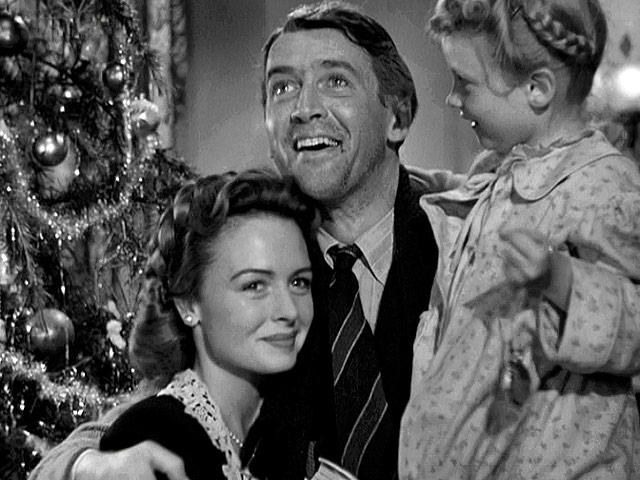The question of why we exist has a plethora of unreasonable answers tied to it. At the heart of the query lies the butterfly effect, the idea that a seemingly trivial action can set off a chain reaction with monumental consequences worldwide. This unique and riveting idea is presented in the 1946 Christmas classic “It’s a Wonderful Life.” It is a movie based on “The Greatest Gift” by Philip Van Doren Stern that resonated with the essence of Charles Dickens’s “A Christmas Carol.” The film encapsulates and exhibits the Christmas spirit of tropes and cliches insofar as “It’s a Wonderful Life” doesn’t just exemplify this; it is the story of Christmas.
The opening scene presents a character named George Bailey, played by James Stewart, contemplating ending his life on a bridge amidst a wintry backdrop, setting the stage for a movie of despair. However, his innate altruism intervenes when he saves another man from drowning, a gesture that unexpectedly alters his fate. George saves Clarence, portrayed by Henry Travers, who reveals himself as a second-class angel through his seemingly omnipotent powers. Clarence is the archetypal of guardian angel stories, evoking the iconic line, “Every time a bell rings, an Angel gets its wings.”
This movie follows the trajectory of the Ebenezer Scrooge-type story, showing flashbacks of George Bailey’s past life. It shows that George epitomizes a life not of acclaim or riches but a life guided by a deep-seated sense of duty and morality, with his unwavering commitment to doing what he believes is right. This is an essential aspect of the story, as it doesn’t try to depict George as a sad figure teetering on edge; it portrays him as content and hopeful until he is thrust into a situation that plunges him into his nadir. “It’s a Wonderful Life” shows that no matter who it is, everyone hits a low point and that, sometimes, the people who look the happiest are suffering the most in disguise.
Clarence enlightens George by revealing his loving wife, Mary Hatch, played by Donna Reed, and his children evoked a prayer to an angel to bring him home. The angel then goes on to reveal to George pivotal moments from his life where he does amazing things that change others’ lives.
James Stewart’s portrayal elevates this movie to new heights. He draws from his experiences as a recent WW2 veteran, showing almost haunting emotions. For example, the scene of George in a bar after contemplating suicide gave an artistic emotion of crying, sorrow and suffering. Moments like these led to his nomination for Best Actor at the Academy Awards for the third time.
The story truly shines at its climax when George condescendingly says, “I wish I were never born.” This moment lights a bulb in Clarence’s mind because of the famous adage, “Be careful about what you wish for.” Clarence grants his wish, and George is brought into a reality where he never existed. “It’s a Wonderful Life” demonstrates its true colors by taking a symbolic meaning into a literal one, with George seeing his wish become a horrifying reality. In a final plea, George returns to the bridge, begging for his old life, realizing his life is not forfeited.
George returns and receives a book titled “No Man Is a Failure Without Friends.” With a new profound perspective, George Bailey realizes he truly has a wonderful life. The film was originally a box office failure despite its numerous Academy Awards and only gained widespread recognition in 1974 when it became public domain, allowing millions across the U.S. to watch it freely.
Hundreds of references still exist in some form today when watching the movie, from the film’s production to the timeless quotes that make it an unbeatable masterpiece. “It’s a Wonderful Life” weaves a tapestry of emotions, reminding everyone that amidst despair, hope and the power to transform your reality are part of your everyday choices to make your life wonderful.








